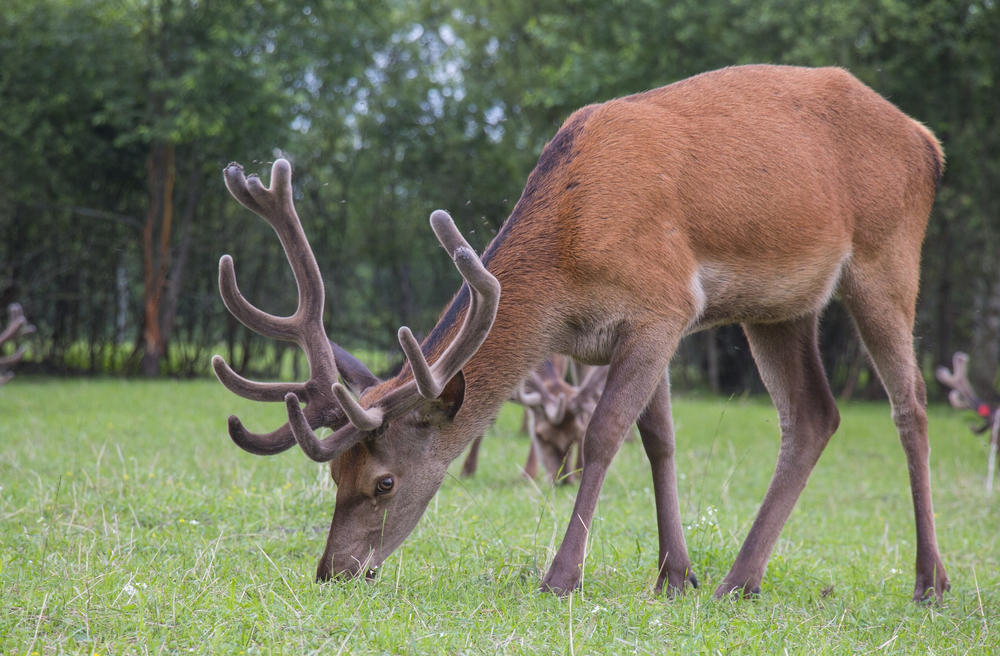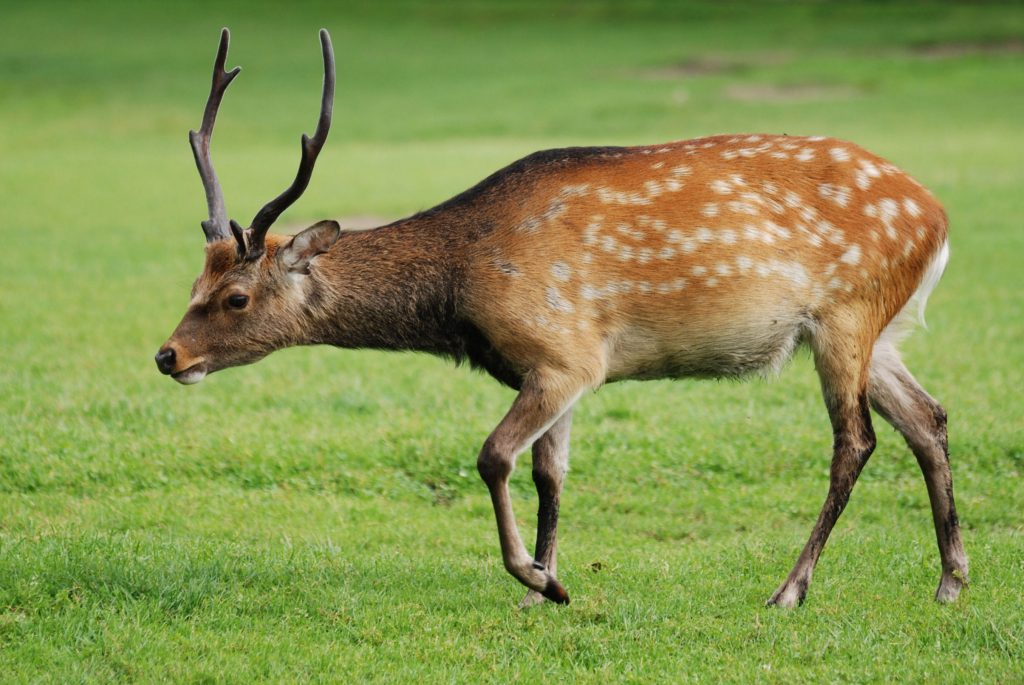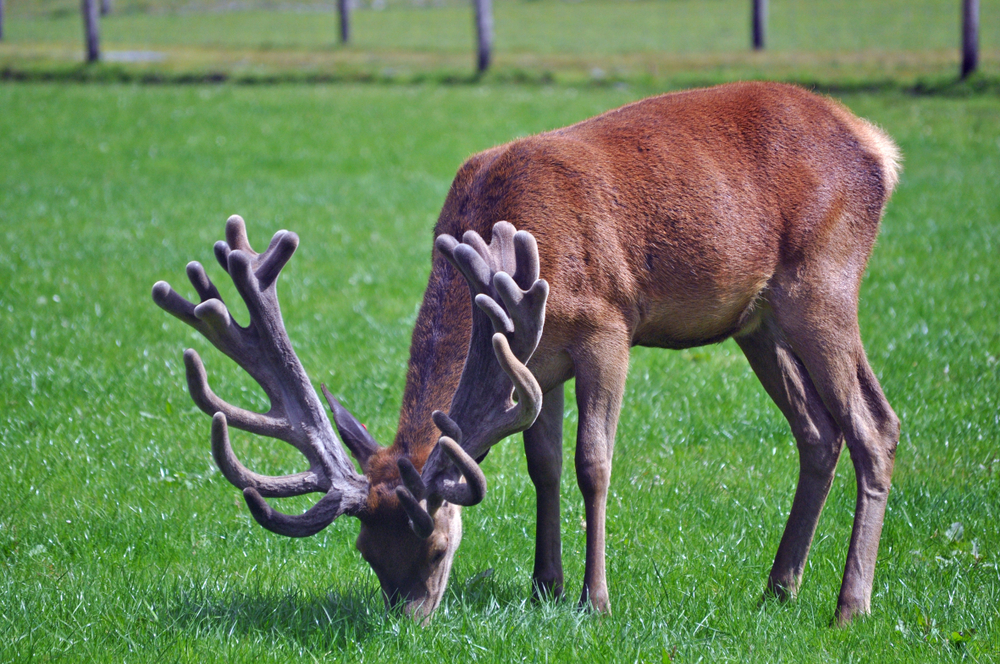History of the Deer Industry

Traditional Chinese Medicine
There are many historic references to the use of deer antler velvet in traditional Chinese medicine (TCM).
The first mention was in a set of silk scrolls called Wushi’er Bingfang (Prescriptions for Fifty-Two Ailments) that were found in a Han-Dynasty tomb dated 168 B.C. It is the first complete text devoted to medical prescriptions and deer antler velvet is mentioned in it.
In addition, the first Chinese materia medica, called the Divine Husbandman’s Materia Medica or Shennong Bencao Jing, was the first of a series of encyclopedic books that systematically listed medicinal materials or drugs. This text also has a brief description of deer antler velvet. In the mid-16th Century in China during the Ming Dynasty, deer farming became important in animal husbandry as a means to support TCM.

The next appearance of deer antler velvet was in a book by Wu Kun called Yi Fang Kao (Study of Prescriptions), which was published in 1584. This book has inspired most of the research on the combination of deer antlers and tortoise shells both of which are bone-like materials rich in gelatins. He developed a formula that is thought to replenish yin and essence, tonify qi, and strengthen yang. It consisted of Gui Lu Erxian Jiao (gui = tortoise, lu = deer, erxian = two immortals, jiao = gelatin) and makes a firm gelatinous product. His recipe which was proportioned to the amount being made included the following:
- Deer antler (lujiao): 5,000 g
- Tortoise plastron (guiban): 2,000 g
- Lyceum fruit (gouizi): 1,500 g
- Ginseng (renshen): 500 g
It was used to treat deficiencies of the “kidney yin and yang, blood and essence in the penetrating and conception vessels with symptoms of weakness of the lower back and legs, impotence, and blurred vision.”
Next, Zhang Jingyue presented two tonic formulas produced in pill form in his book Jingyue Quanshu in 1624. The first formula called Yougui Wan emphasized the tonification of kidney yang, which is thought to nourish the right kidney. The second one, called Zuogui Wan stressed nourishing kidney yin, which is thought to nourish the left kidney. Both formulas contained deer antler gelatin ((lujiaojiao) that was derived from boiling the whole antler.
In TCM, the whole antler was considered a revitalizing yang tonic with some nourishing yin qualities. The gelatin was considered to be a milder yang tonic that had greater nourishing yin properties similar to the tortoiseshell, which does not have yang tonic properties.
Since deer antler velvet was added later in the standard TCM formulations, it rarely appears in Japanese preparations.
Species of Deer for Antler Velvet

In the past, deer antler velvet was collected from several species of wild deer from the Cervidae family. Although there are 45 species of deer in the world, the sika deer (Cervus nippon) and the red deer (Cervus elaphus) have been used more frequently in TCM.
The sika deer is found in East Asia from Vietnam to Taiwan in the south and from China to Korea and Japan in the north. The red deer originated in Europe and Asia. For the purpose of farming, Sika deer were introduced to New Zealand to produce antler velvet, and red deer were introduced to New Zealand, Australia, Chile, and Argentina.
Western Adoption
Even though Chinese and Korean traditional medicine has been practiced for over 2,000 years, it is only recently that people in the West are seeing that there are other alternatives to preventing disease and improving health. People have begun to look for “natural” treatments that are not prescription drugs to relieve symptoms and balance body functions to allow for healthy lifestyles.
New Zealand Deer Farming

New Zealand is the largest producer of deer antler velvet in the world; however, large-scale commercial farming of deer did not begin until 1970. At that time, the first deer farming license was granted. Deer are not native to New Zealand, and the first deer imported to New Zealand came from England and Scotland in the late 19th century to be hunted for sport. Wild herds of red, sika, white-tailed, Javan Rusa, and sambar deer as well as elk were established on both islands of New Zealand.
The environment in New Zealand was ideal for the deer to thrive and wild populations, particularly red deer, rapidly increased. The populations of wild deer eventually became regarded as pests because they were destructive to native forests and the local environment. It was recognized in the 1960s that the country could solve the problem of increased populations of deer into an opportunity to export them for a profit. Exporting venison from deer shot in the wild began in the 1960s.
Since the quality, size, and available supply of deer varied, those involved in exporting venison realized that farming them would help resolve these issues. A new industry was born and beginning in the early 1970s, large numbers of deer were captured in the wild and sold to deer farmers.
By the year 2000, approximately 80% of deer antler velvet produced in New Zealand was exported to Korea. In 2005, the number of deer being farmed in New Zealand exceeded 1.7 million. Deer farming led the world in technology and made a significant contribution to the national economy.
The market for deer antler velvet has become even more volatile than it is for venison. The market is very sensitive to volume, and therefore, if New Zealand tries to sell much more than 500 tons of frozen deer antler velvet, the price drops drastically. The highest prices for deer antler velvet have been around $250 per kilogram, but the price to the farmer fell to $45 between 2004-2005 and rebounded to $160 in 2006–2007. Tourism to New Zealand continues to increase, especially among Asians who are familiar with and interested in purchasing deer antler velvet products.
Deer Antler Velvet for Pets
Recently, a new market for deer antler velvet has emerged—veterinary interest in the use of these products for arthritis and degenerative joint disease in dogs and cats has increased. The proteins, growth factors, and glycosaminoglycans found in deer antler velvet are beneficial for joint health in dogs, cats, and horses.
